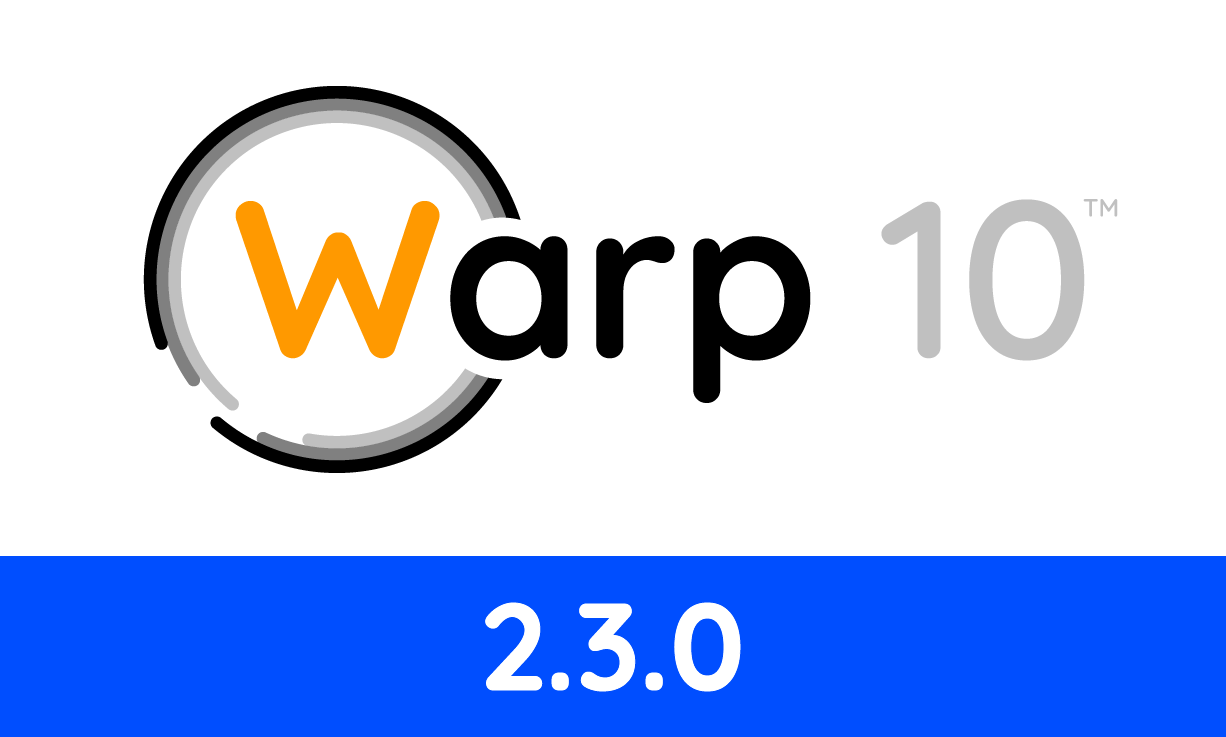Discover what release 2.3.0 of the Warp 10 time series database and platform has to offer.

Friday, December 13, 2019, three months after the release of the 2.2.0, we published the 2.3.0 release of Warp 10. On the menu, some bug fixes and a lot of new functionalities. We are especially excited about the addition of new ways of fetching data to further fit your needs.
| Discover the latest version of Warp 10. |
Convention change
When using the FETCH function or the /api/v0/fetch endpoint, the end and the start timestamps are now included. The same thing goes when specifying the timespan parameter as end - start = timespan - 1. This differs from pre-2.3.0 releases, where start was excluded. This change allows fetching points whose tick are MIN_LONG which was mistakenly impossible before.
Bug fixes
A bug preventing from using standalone parallel scanners is now fixed, which means you can improve your fetch speeds.
The Pblend function was also fixed, so you can mix different images using Processing.
Fetch: boundaries, skip, count and sample
The most important addition of this 2.3.0 is the new ways of fetching GTSs.
It is now possible to fetch a specified number of points before and after a defined time window. Simply add the boundary.pre and boundary.post parameters either in the map given to FETCH or in the HTTP request to /api/v0/fetch and voilà!
You can also set the skip parameter, similarly, for the fetch to ignore the N newest points in the time window you specified.
If you need to have a sample of the data, we introduced the sample parameter, giving the probability of a point to be returned. Valid values are doubles in ]0;1].
Finally, count gives you the possibility to specify the number of points you want to fetch inside the time window, the time window is defined with end andstart or end and timespan. You can now fetch a number of points in a time window, instead of having to choose between a number or a time window.
Delta Attributes
The 2.3.0 release makes it possible to update attributes on the directory with deltas instead of overriding them, a bit like SETATTRIBUTES does in WarpScript. To use this new feature with the 2.3.0 release, you first need to add ingress.attributes.allowdelta = true to your configuration file. Then, you can use METADIFF or send a request with the delta attributes to /api/v0/meta with the header http.header.attributes set to delta.
Macro Manipulation
Macros are building blocks of WarpScript, so we made them even more versatile and optimized:
We first added the DEREF function to replace a given variable or register with anything you want inside a macro. This is particularly useful for currying your macros.
Next, we improved VARS and ASREGS to handle the list based construct of STORE such as [ "a" "b" "c" ] STORE. This allows you to create both clean and optimized code!
WarpScript Functions
As always, with a new release come new and updated WarpScript functions:
- SYMBOLS to list all the available symbols,
- GEO.WKB to convert WKB to a GeoShape, in the same way GEO.WKT does for WKT,
- MOTIONSPLIT to split a Geo Time Series depending on criteria on motion,
- bucketizer.sd and bucketizer.sd.forbid-nulls are bucketizers returning the standard deviation for each bucket,
- SRANDPDF which is the seeded version of RANDPDF,
- Comparison functions now support comparison between byte arrays,
- MIN and MAX work on a list of numerical values.
Misc
Other improvements have been added to this release:
- Ephemeral support for chunked in-memory
- Ingress plugins
- Configurable HTTP TCP backlog for every server
- More sensision metrics and telemetry
- Max labels and attributes sizes
- Cleaning some dependencies
- More detailed error messages
Warp 10 – 2.3.0

WarpScript™ Doctor